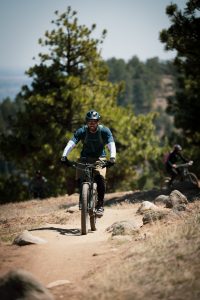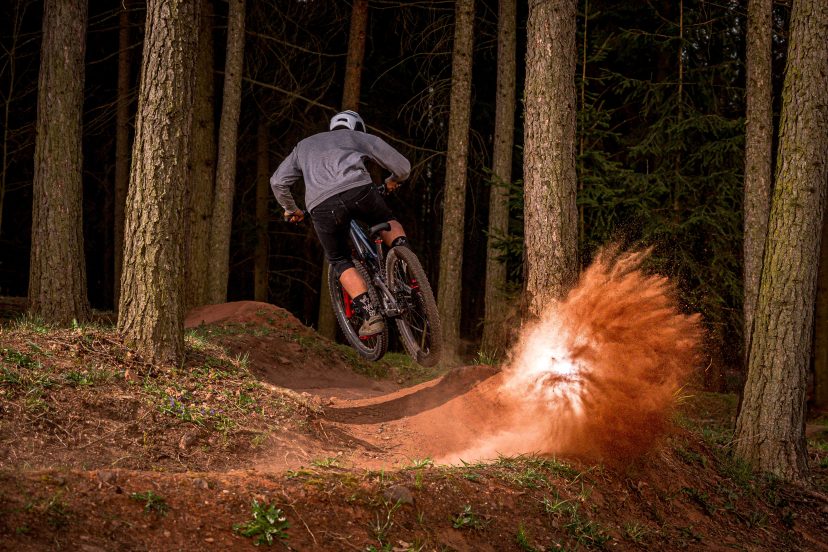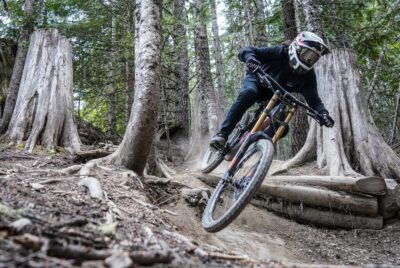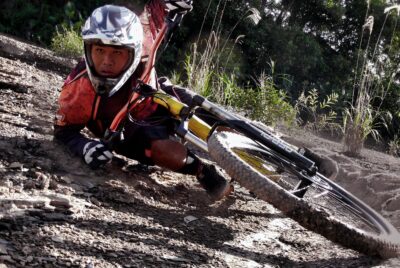How to Rail Loose or Sandy Mountain Bike Trails
Introduction
Mountain biking is an exhilarating sport that allows us to connect with nature and push our limits. However, riding on loose or sandy trails presents a unique challenge. The lack of traction can make it difficult to maintain control and speed. But fear not! In this article, I’ll share valuable tips and techniques to help you rail loose or sandy mountain bike trails like a pro. So, let’s dive in and conquer those tricky trails!
Understanding Loose or Sandy Trails
Riding on loose or sandy trails requires a different approach compared to riding on firm surfaces. It’s crucial to understand the challenges you’ll encounter and adapt your riding style accordingly. The key is to find a balance between speed and control, enabling you to flow through the terrain with confidence.
The Challenge of Loose or Sandy Trails
Loose or sandy trails pose several challenges for mountain bikers. The main issue is reduced traction, which makes it harder to maintain control and maneuver effectively. The bike may slide or drift more easily, causing instability and potential crashes. Additionally, braking and cornering can be more challenging due to the unpredictable nature of the terrain. However, with the right techniques and adjustments, you can overcome these challenges and ride with finesse.
Choosing the Right Equipment
To tackle loose or sandy trails effectively, having the appropriate equipment is crucial. Here are some key factors to consider when selecting your gear.
Tire Selection
Choosing the right tires plays a significant role in gaining traction on loose or sandy trails. Look for tires with a more aggressive tread pattern and wider knobs, as they provide better grip and control. The increased surface area helps the tires dig into the terrain and maintain traction.
Tire Pressure
Proper tire pressure is essential when riding on loose or sandy trails. Lowering the tire pressure allows the tires to conform to the terrain, increasing the contact patch and improving traction. Experiment with different pressures to find the sweet spot that works for you, considering factors like rider weight, trail conditions, and personal preference.
Suspension Setup
Your bike’s suspension can greatly influence how it handles on loose or sandy trails. Set your suspension to be slightly softer than usual, as this helps the bike absorb bumps and maintain traction. The increased compliance allows the tires to better track the terrain, enhancing control and stability.
Mastering Technique
Developing solid technique is key to railing loose or sandy trails. Let’s explore some essential techniques that will help you conquer the challenging terrain.
Body Positioning
Maintaining the correct body position is crucial for balance and control. Shift your weight slightly back to keep the front wheel weighted and provide better traction. Keep your elbows and knees bent, allowing your body to move with the bike and absorb the trail irregularities. This position helps you stay centered and react quickly to changes in the terrain.
Line Choice
Choosing the right line is crucial on loose or sandy trails. Look for areas with more compacted dirt or lines with better traction. Avoid loose or deep sand patches, as they can cause your tires to sink and lose momentum. Anticipate the trail ahead and plan your line accordingly, aiming for areas that offer better grip and stability.
Braking Technique
Braking effectively on loose or sandy trails requires finesse. Squeeze the brakes gently to modulate your speed rather than grabbing them abruptly. This technique prevents skidding and allows the tires to maintain traction. Practice braking in various situations to develop a feel for the optimal brake pressure.
Cornering Technique
Cornering on loose or sandy trails demands precision and control. Approach corners with a wide entry, allowing you to carry momentum through the turn. Focus on leaning your bike while keeping your body upright. This technique shifts the weight to the tires and helps maintain traction. Accelerate smoothly out of the corner to regain speed and flow.
Adjusting Riding Style
To rail loose or sandy trails effectively, you’ll need to make adjustments to your riding style. Let’s explore some important aspects to consider.
Maintaining Momentum
Maintaining momentum is crucial when riding on loose or sandy trails. Pedal consistently to keep the bike moving forward and prevent unnecessary bogging down in the terrain. Anticipate sections where pedalling might be challenging and build up speed beforehand to carry you through those areas.
Smooth and Fluid Movements
Riding smoothly and fluidly helps you maintain control and stability on loose or sandy trails. Avoid sudden movements or aggressive inputs that can disrupt traction and balance. Instead, focus on gentle inputs and let the bike flow naturally with the trail. Smooth movements allow the tires to maintain contact with the ground, maximizing traction and control.
Trail Maintenance and Conservation
Lastly, let’s not forget the importance of trail maintenance and conservation. Riding on loose or sandy trails can lead to trail erosion and damage if not done responsibly. Be mindful of the impact your riding has on the environment. Stay on designated trails, avoid skidding unnecessarily, and follow trail etiquette to ensure the longevity of the trails for future riders.
Conclusion
Railing loose or sandy mountain bike trails requires a combination of technique, equipment, and adjustments to your riding style. By choosing the right gear, mastering the essential techniques, and adapting your approach to the terrain, you can confidently navigate these challenging trails. Remember to maintain momentum, stay smooth and fluid, and prioritize the conservation of the trails. With practice and experience, you’ll soon find yourself flowing effortlessly through the loosest and sandiest of trails.
FAQs
FAQ 1: Is it necessary to lower the tire pressure on loose or sandy trails?
Lowering the tire pressure on loose or sandy trails is highly recommended. It increases the contact patch and allows the tires to conform to the terrain, improving traction and control.
FAQ 2: How can I choose the right line on loose or sandy trails?
When choosing a line on loose or sandy trails, look for areas with better grip and stability. Avoid loose or deep sand patches, and anticipate the trail ahead to plan your line accordingly.
FAQ 3: How can I maintain momentum on loose or sandy trails?
Maintaining momentum on loose or sandy trails is essential. Pedal consistently and anticipate sections where pedaling might be challenging to build up speed beforehand.
FAQ 4: How can I ride smoothly on loose or sandy trails?
To ride smoothly on loose or sandy trails, focus on gentle inputs and avoid sudden movements. Let the bike flow naturally with the trail, allowing the tires to maintain contact with the ground.
FAQ 5: Why is trail conservation important when riding on loose or sandy trails?
Trail conservation is crucial to preserve the integrity and longevity of the trails. By following trail etiquette and minimizing trail erosion, we ensure that future riders can enjoy these trails as well.




